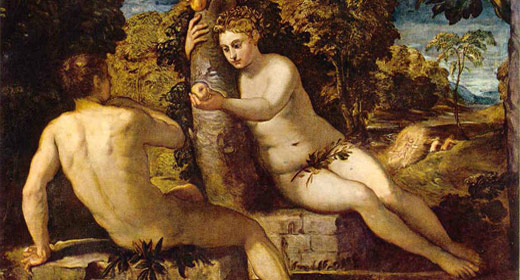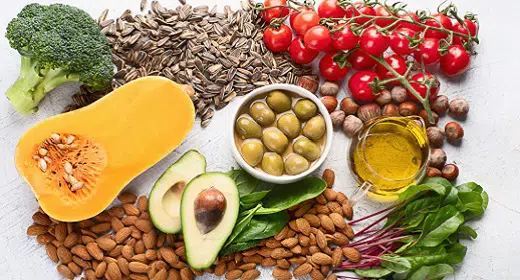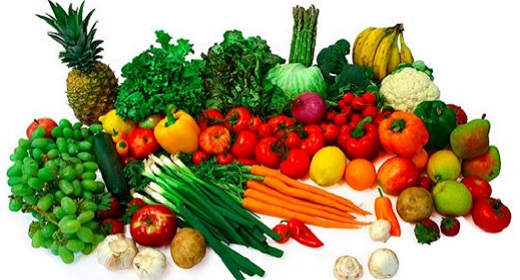by Ocean Robbins: The Unique History of Vitamin E (Alpha Tocopherol)…
We are proud to announce a new partnership with John and Ocean Robbins and the Food Revolution to bring our readers Summits, Seminars and Masterclasses on health, nutrition and Earth-Conscious living.
Sign Up Today For the Healthy Heart Masterclass
Henry Albright Mattill was obsessed with the possibility that milk was the “perfect food.” The professor of biochemistry ran a series of experiments, starting in 1920, in which he fed a group of rats nothing but cow’s milk for their entire lives. Aside from the grim monotony (no 31 flavors here), the rats appeared to thrive. (Our view on the use of animals in medical research is here.)
Until, that is, it was time for them to reproduce. Both males and females, it turned out, had become sterile on the dairy diet. Mattill and his colleagues then went to work supplementing the diet to figure out what was missing. Starch, butterfat, salts, whole milk, dried milk — nothing worked. They began thinking that maybe milk was some kind of pregnancy preventer.
Another scientist, an endocrinologist named Herbert Evans, who in 1922 had just published the definitive guide to “the estrous cycle in the rat” (I am not making this up), caught wind of the then-recent discoveries of vitamins A, B, and C, and wondered whether there might be some hitherto unknown nutrient that rats — and all mammals, perhaps — require in order to reproduce. They fed their rats a combination of casein (milk protein), cornstarch, lard, butterfat, salts, cod liver oil (for vitamin A), yeast (B vitamins), and orange juice (say it with me, vitamin C) — and still no pregnant rats.
What turned it around? The addition of lettuce — which we now know is a source of vitamin E, the vitamin that is the subject of this article. Another researcher, Barnett Sure, performed similar experiments and had the honor of bestowing the next letter of the alphabet (D had just been discovered) upon what was now being described as “a specific vitamin for reproduction.” That’s how vitamin E got its scientific name, tocopherol, from the Greek “tocos” (birth) and “pherein” (to bear or carry — where we get the word “ferry”).
So now that we know that vitamin E can help rats have babies, let’s see what’s in it for humans. What exactly is vitamin E, and what health benefits does it bestow (besides reproduction)? What are the best sources of vitamin E? And given its importance, should you take a supplement to be sure you’re getting enough?
What Is Vitamin E?
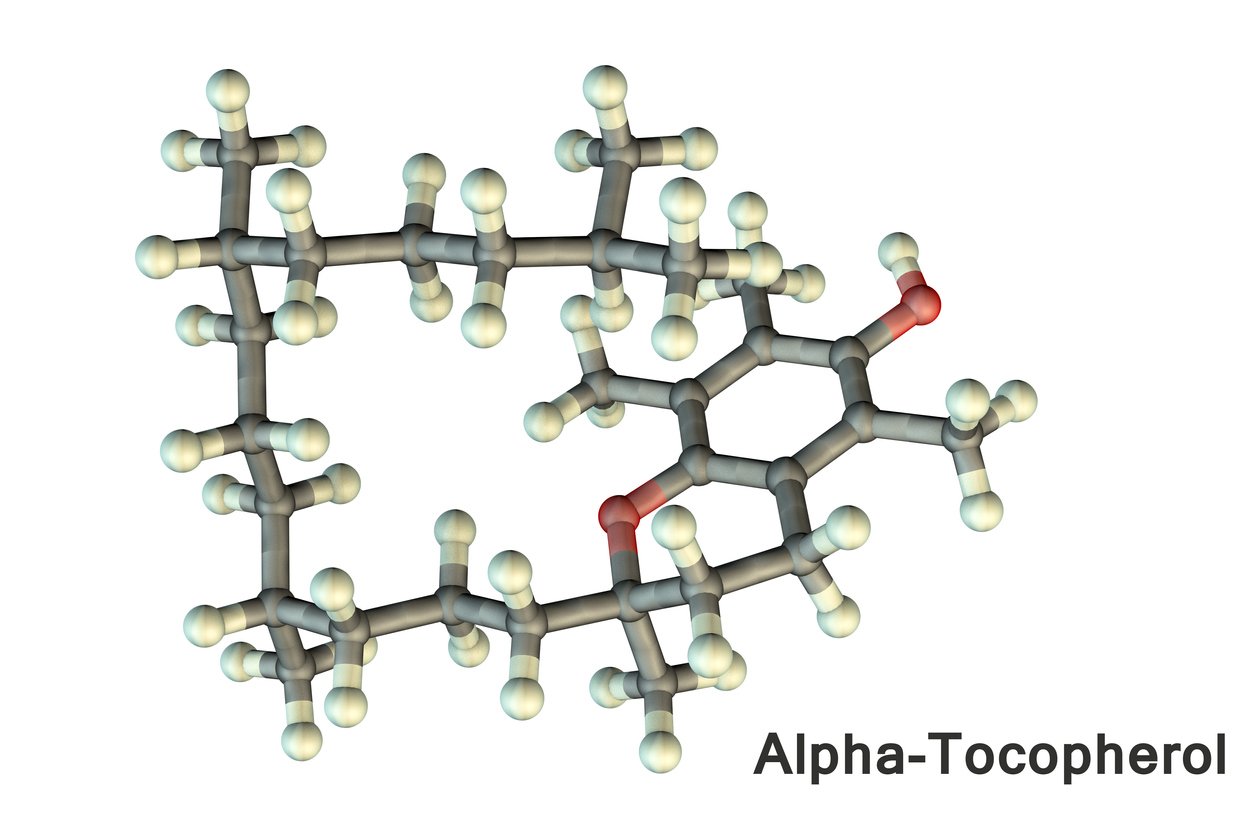
Vitamin E is actually a group of eight fat-soluble vitamins; four are tocopherols, and four are tocotrienols. The most biologically active form of vitamin E, and the one we’ll be covering in this article, is alpha-tocopherol.
We also know that vitamin E functions as a potent antioxidant that plays a crucial role in numerous biological processes beyond reproduction, including immune function and the health of your heart, brain, and eyes.
While the discovery of vitamin E (α-tocopherol) occurred in 1922, it wasn’t isolated and assayed chemically until 1935, and not synthesized for another three years. As a fat-soluble chemical, like its vitamin friends A, D, and K, vitamin E gets digested, absorbed, and transported in a manner similar to that of fats. It also accumulates in the fat, muscle, and liver tissue, and so excess vitamin E can be a toxicity risk, unlike the water-soluble B and C vitamins that are excreted much more easily.
Vitamin E Forms
The eight forms of vitamin E include alpha, beta, gamma, and delta tocopherols and alpha, beta, gamma, and delta tocotrienols (isn’t it nice to use Greek letters for good stuff, and not just variants of viruses!). While they work together synergistically, the only form recognized to meet human nutrition requirements is alpha-tocopherol.
That is, it’s the only one that attaches to its own specific protein transporter in the bloodstream, and the only form still found in blood a few days after consumption. Fortunately, our bodies are typically very good at converting the other vitamin E forms into alpha-tocopherol as more is needed.
The concentration of vitamin E in your blood at any given time depends largely on your liver. After you consume foods or supplements that provide vitamin E, whatever you don’t use right away is stored (mostly in the liver) for later use, or excreted. If you need more, your body just does its version of filling out a withdrawal slip, and the liver disburses the alpha-tocopherol (the only form the liver stores) to do whatever task is required. You excrete most of the non-alpha-tocopherol forms, which is why, when you have blood levels of vitamin E checked, the concentrations of alpha-tocopherol are typically higher than other forms.
Benefits of Getting Enough Vitamin E
So given that you are probably not a rat who wants to have babies, what has vitamin E ever done for you? Before I start sharing the long list of benefits, I want to front-load a little bit of a spoiler here: while you can find vitamin E in both foods and supplements, there appear to be differences in the benefits you receive from the two sources. As you’ll see, evidence suggests that it’s better to get your vitamin E from whole food sources whenever possible.
Vitamin E benefits heart health (but apparently not when it comes from supplements)
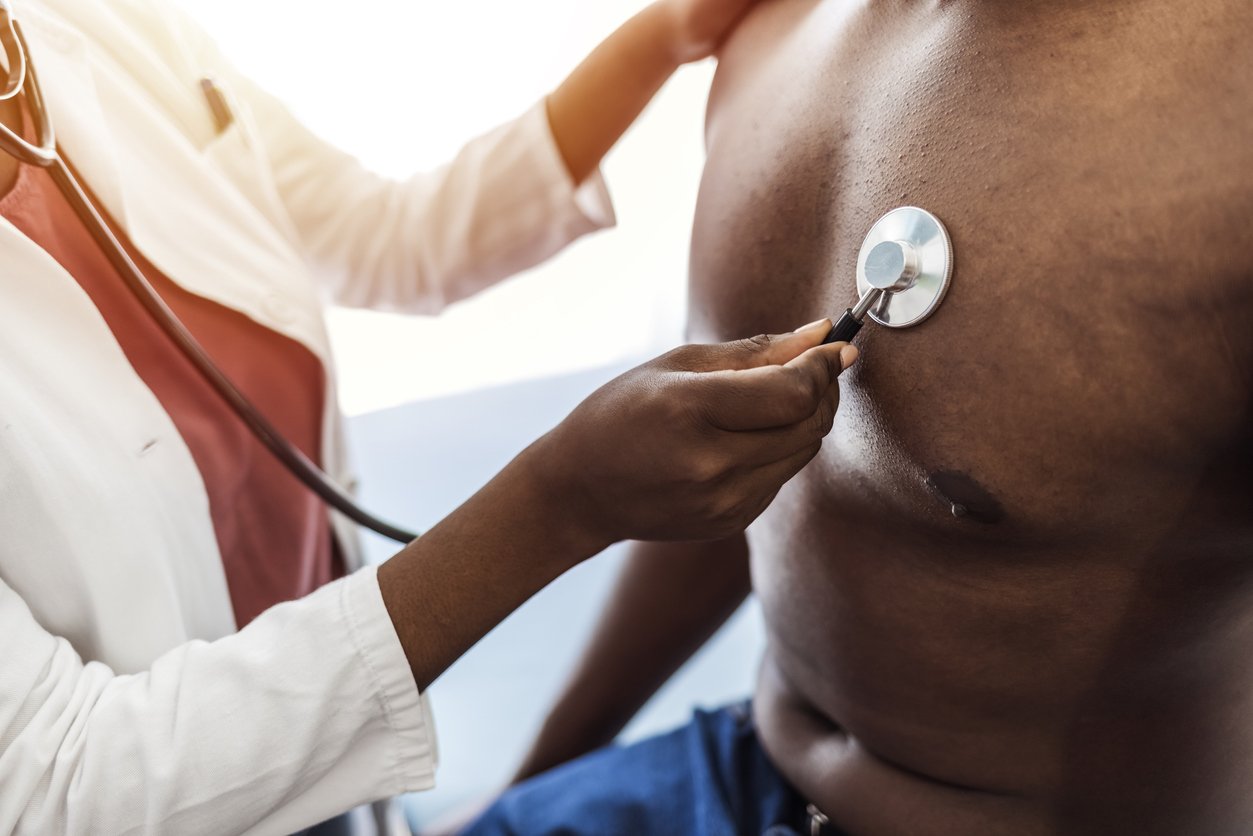
Vitamin E may help prevent or delay cardiovascular disease, perhaps by preventing oxidation (basically, rusting) of LDL cholesterol, which researchers believe may be a crucial initiating step for atherosclerosis. It may also help prevent the formation of blood clots that could lead to a heart attack.
These lab findings spurred research interest in supplemental vitamin E to combat one of the developed world’s most common killers. And indeed, research has seemed to show that vitamin E could prevent heart disease. A 1993 study of approximately 90,000 nurses found that the incidence of heart disease was 30–40% lower in those with the highest intakes of vitamin E compared with those who got the least.
A study published the following year found that among a group of 5,133 Finnish men and women observed for a mean of 14 years, higher vitamin E intakes from food were associated with decreased mortality from coronary heart disease.
While suggestive, these studies could do no more than point out strong correlation. While the study designs attempted to account for confounding variables like age and smoking status, it’s still likely that people choosing to supplement were different in other ways from those who didn’t.
Researchers wanted a randomized, double-blind, placebo-controlled trial in order to seek more clarity. And since it’s difficult if not impossible to conduct a double-blind study using real food (“Mrs. Filberson, that MIGHT be a vitamin-E rich bowl of steamed pumpkin, but then again, it might be a placebo!”) researchers tend to use supplements.
The HOPE and HOPE-TOO Studies and Vitamin E
Enter the HOPE (Heart Outcomes Prevention Evaluation) study, which followed almost 10,000 patients at high risk of heart attack or stroke for 4.5 years. Researchers found that participants randomized to 400 IU/day of vitamin E (268 mg) experienced no fewer cardiovascular events or hospitalizations for heart failure or chest pain than participants taking a placebo, and actually may have increased their risk of heart failure.
In the follow-up HOPE-TOO study, almost 4,000 of the original participants continued to take vitamin E or a placebo for an additional 2.5 years. HOPE-TOO found that not only did vitamin E supplements provide no significant protection against heart attacks, strokes, unstable angina, or deaths from cardiovascular disease or other causes after seven years of treatment, those taking it were more likely to experience (and require hospitalization for) heart failure.
In other words, the HOPE and HOPE-TOO trials provided compelling evidence that moderately high doses of vitamin E supplements not only do not reduce the risk of serious cardiovascular events among men and women over 50 years of age with established heart disease or diabetes, but may actually make things worse.
Let’s not throw out the food with the supplements, however. Just because vitamin E supplements don’t seem to help with heart health doesn’t mean that vitamin E-rich foods aren’t great for you. And there’s more…
Vitamin E may have anticancer properties

Vitamin E from food may help prevent cancer. As an antioxidant, vitamin E may prevent free radicals in the body from damaging healthy cells, as well as augment the immune system.
Vitamin E from food appears to be protective. The Iowa Women’s Health Study, published in 1993, found that in over 35,000 women there was a correlation between higher vitamin E intake and a lower incidence of colon cancer. And the older the women, the more pronounced the effect.
Supplemental vitamin E, however, doesn’t appear to confer the same, or any benefit. In the 2005 Women’s Health Study, in which healthy women over 45 received either 600 IU of natural vitamin E (402 mg) every other day, or a placebo for 10 years, the supplement did not reduce the risk of developing any form of cancer. In men, daily use of large-dose vitamin E supplements (400 IU of synthetic vitamin E [180 mg]) may increase the risk of prostate cancer.
And a 2002 study followed over 140,000 health professionals for up to 8 years, and correlated their self-reported food-based vitamin E intake (from food frequency questionnaires) with development of colon cancer. It did not show that supplemental vitamin E could lower risk of disease.
Vitamin E and eye health

People who don’t take in much vitamin E from food have a higher risk of developing age-related macular degeneration (AMD), an eye disease that can lead to the loss of our central vision, compared with people who get this nutrient regularly in their diet.
Studies are less conclusive when it comes to supplemental vitamin E and eye health. A couple of studies showed no benefit. On the other hand, the Age-Related Eye Disease Study (AREDS), a large randomized clinical trial, found that participants at high risk of macular degeneration (those with intermediate AMD or advanced AMD in one eye) reduced that risk by 25% by taking a daily supplement containing vitamin E and other antioxidants as well as zinc and copper.
Vitamin E may benefit brain health

A 2002 prospective cohort study of several thousand elderly in a community on the South Side of Chicago found that Vitamin E consumption from foods or supplements was associated with less cognitive decline. The youngest participant was 65, while the oldest was 102.
On the other hand, supplements alone didn’t seem to make a difference in another clinical trial in healthy older women. The 2006 Women’s Health Study randomly assigned almost 40,000 participants to receive a vitamin E supplement or a placebo every other day for up to 4 years. The double-blind, placebo-controlled study found that the supplements provided no apparent cognitive benefits. So once again we’re seeing that vitamin E may bring significant benefit, but for some reason, vitamin E from supplements alone might not.
Vitamin E supports immune function and disease protection

As an antioxidant, vitamin E protects our cells from oxidative damage that can lead to disease. Vitamin E also counteracts the negative effects of a nasty class of chemicals called reactive oxidative species (ROS) that form when fat undergoes oxidation. Through this mechanism, vitamin E may help enhance the immune system and prevent or delay onset of chronic diseases associated with free radicals.
This is important as we make free radicals in response to environmental exposures, including cigarette smoke, air pollution, and UV radiation from the sun.
Supporting this theory, immune cells contain higher concentrations of vitamin E than other cells found in the bloodstream. If you have enough vitamin E in your body, it may help to reduce your risk for infectious disease and respiratory infections, as well as allergic conditions.
Vitamin E for Skin Care
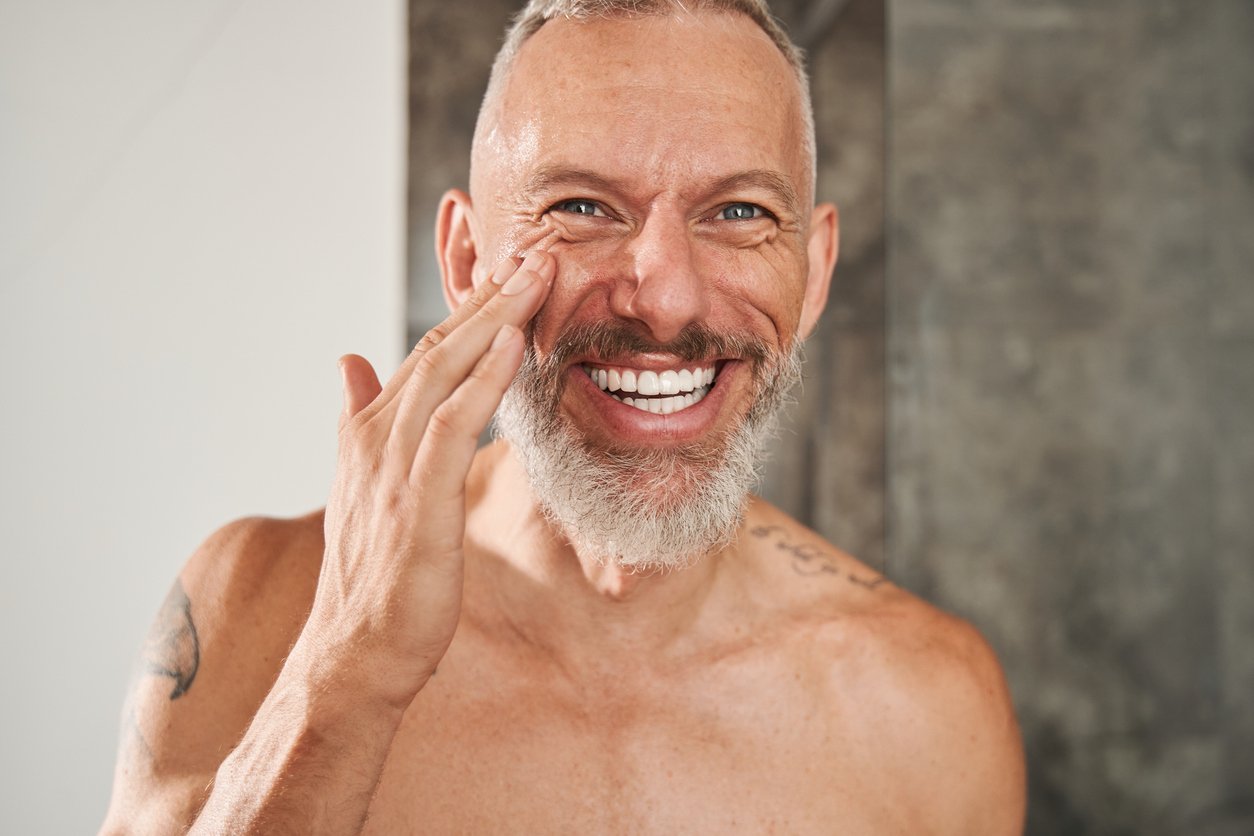
Dermatologists have been recommending vitamin E for over 50 years. And the beauty industry has been touting the benefits of vitamin E oil and vitamin E capsules for skin and hair care for decades. In the same way that it prevents oxidation in the brain, vitamin E can protect your skin by acting as a free radical scavenger, repairing cells damaged by excessive sun exposure and possibly preventing sunburn.
Personally, I’ve noticed that if I spend too long in the sun and fear a nasty burn coming on, when I break open a vitamin E oil-filled capsule and spread the oil on my parched skin, it seems to reduce my chances of the sunburn worsening. And indeed, vitamin E is a common ingredient in cosmetics and topical cream and lotions. It also has uses in the treatment of yellow nail syndrome, eczema, pressure sores, and psoriasis. So while vitamin E benefits may vary when taken internally, applying vitamin E oil topically can help the largest organ in your body — your skin!
Vitamin E Risks
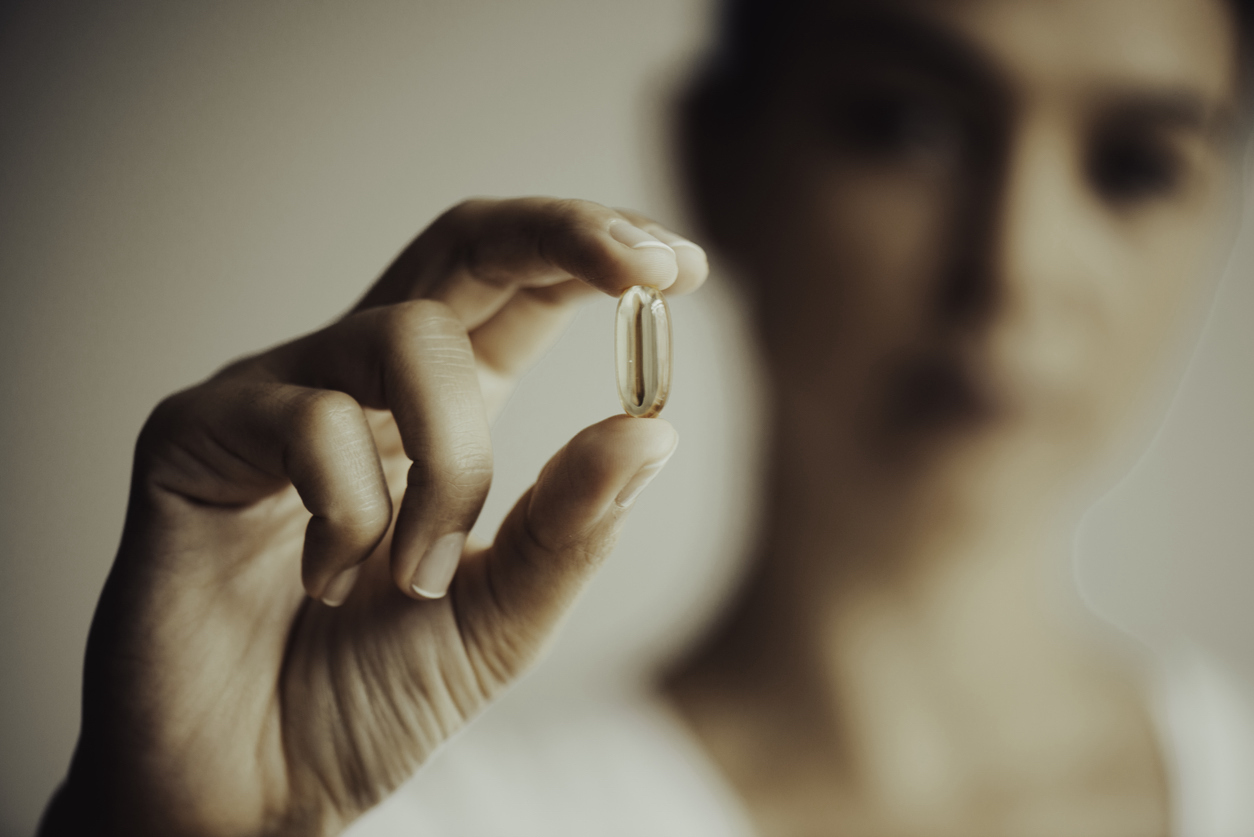
As with other vitamins, vitamin E can be problematic when taken in supplemental form, rather than from foods. We know what happens if you have too much vitamin E from animal studies showing that high dose alpha-tocopherol supplements can cause hemorrhage and interrupt blood coagulation, as well as lab studies demonstrating that they can also prevent platelet aggregation.
So, how much vitamin E is safe, and is too much vitamin E dangerous?
Two clinical trials have found that taking alpha-tocopherol supplements actually increases the risk of hemorrhagic stroke. One trial included Finnish male smokers who consumed 50 mg a day for an average of six years. Vitamin E consumption didn’t affect overall mortality, but led to more hemorrhagic strokes compared to a control group. The other trial followed roughly 15,000 male physicians in the United States, who consumed 400 IU (360 mg) of synthetic vitamin E every other day for an average of eight years, along with vitamin C. Again, no benefit to supplementation, and a greater risk of stroke.
Vitamin E doses of 1,000 mg are considered the upper tolerable limit. But the bottom line, based on the evidence we’ve seen so far, is that there are few if any cases in which vitamin E supplementation is a good idea. The data makes it clear that getting your vitamin from food is far better.
How Much Vitamin E Do I Need?
OK, let’s buckle in and ride through the confusing turbulence regarding recommended daily amounts of vitamin E.
The first challenge is the shift in measurement. Until January 2021, the measurement of vitamin E was in IUs (International Units) on food packaging labels; now it’s listed in milligrams (mg). If you have any packaged food that’s more than a year old, you should probably toss it. If you want to convert the old measurement system into the new one, here’s how: for natural alpha-tocopherol, multiply the IU by 0.67 to get mg. For example, 40 IU = 26 mg. And for the synthetic version, multiply the IU by 0.9 to convert to mg. For example, 40 IU = 36 mg.
Second, vitamin E from natural sources and synthetic (lab-made) vitamin E have slightly different chemical names, and different potencies. Natural vitamin E is listed as “d-alpha-tocopherol” on food packaging and supplement labels, while synthetic vitamin E goes by “dl-alpha-tocopherol.” (If those look the same to you, don’t worry — they did to me too the first time I read the names. The difference is the addition of a letter “l” for the synthetic version.) It turns out that the natural form is twice as potent as the synthetic.
Third, if you’re trying to figure out how much vitamin E a baby should be receiving, there’s no RDA (recommended daily allowance) for infants because of insufficient evidence. Instead, look for the AI (adequate intake) based on the amount of vitamin E consumed by healthy breastfed babies.
With all those disclaimers and complications out of the way, here’s the US government’s best guess for how much vitamin E folks should be consuming on an average day:
- 0–6 months: 4 mg (AI)
- 7–12 months: 5 mg (AI)
- 1–3 years: 6 mg
- 4–8 years: 7 mg
- 9–13 years: 11 mg
- 14+ years: 15 mg
- Pregnancy: 15 mg
- Lactation: 19 mg
Vitamin E Deficiency

The good news is that it isn’t hard to get the recommended intake levels noted above. And as a result, we don’t see a lot of overt vitamin E deficiency these days. Symptoms of true vitamin E deficiency can include the following:
- Muscle weakness
- Impaired vision
- Numbness and tingling
- Immune system problems
- Coordination and walking difficulty
The main reason someone would be deficient in vitamin E, other than being a rat in an experiment trying to prove that rodents can live on nothing but cow’s milk, would be if they have a disorder that impairs their ability to digest and absorb fat. Since vitamin E is fat-soluble, a variety of conditions that make it hard for people to digest fat can lead to a risk of deficiency. These include Crohn’s disease, cystic fibrosis, an inability to secrete bile from the liver into the digestive tract, or a rare inherited disorder called abetalipoproteinemia that interferes with the absorption of fat-soluble nutrients in the blood.
Similarly, extremely low-fat diets can be problematic because some fat is needed to absorb vitamin E. If you suspect you may be deficient, you can get your vitamin E blood levels tested. The normal range of alpha-tocopherol in the blood is 5.5–17 milligrams per liter (mg/L) for adults and 3–18.4 mg/L in children. For numbers at the low end of those ranges or below, you may want to make a point of eating more vitamin E-rich foods.
Best Sources of Vitamin E
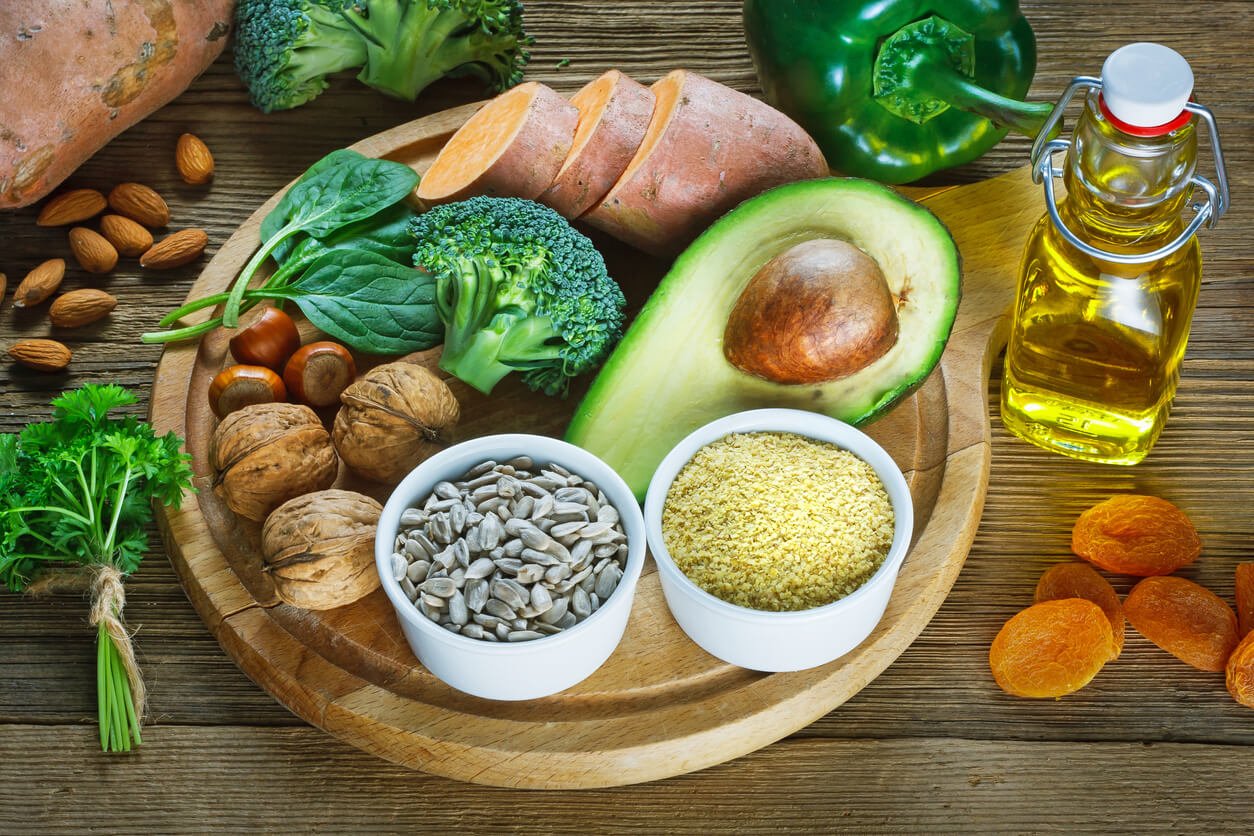
The conflicting and confusing research we’ve been exploring points to a couple of things we’re pretty sure we know: vitamin E is a crucially important nutrient, and the best place to get it, for most people, is from food sources rather than supplements. So what are these food sources?
The majority of the vitamin E consumed by residents of the US and other industrialized nations is in the form of vegetable fats, as animal products generally don’t contain much. If you want to get your vitamin E along with lots of other beneficial nutrients, then here’s the good news: your alpha-tocopherol is found in many healthy plant foods, including nuts and seeds, dark leafy greens, and some orange and red fruits.
The USDA’s FoodData Central database lists many of the foods that will bless you with vitamin E love if you let them.
Examples of vitamin E-rich foods:
- Wheat germ oil – 20 mg per tablespoon
- Sunflower seeds – 13 mg per ¼ cup
- Almonds – 9 mg per ¼ cup raw whole nuts
- Hazelnuts – 5 mg per ¼ cup raw whole nuts
- Pine nuts – 3 mg per ¼ cup
- Avocado – 2 mg per ½ avocado
- Sweet red bell peppers – 2 mg per medium pepper
- Mango – 3 mg per mango
- Kiwi – 1 mg per kiwi
- Turnip greens – 3 mg per cup cooked greens
- Spinach – 0.5 mg per cup raw leaves
- Broccoli – 0.7 mg per cup
Recipes Using Foods Rich in Vitamin E
Want to have fun in the kitchen while supporting your vitamin E intake naturally through whole foods? Explore your inner artist by creating the Avocado Mango and Quinoa Nigiri appetizer. Try collards in a most delicious way by making the Slow Cooked Collards with Rainbow Veggies (trust us, it’s yummy!). Experience plant-based recipes made easy by making the Cruciferous Crunch Bowl where the lentils and quinoa cook together and finish together, and the broccoli and radish cook together and finish together. The making of this bowl is streamlined, but it looks (and tastes!) like it took you days. What’s more, all of these dishes supply you with tons of nutrition, including vitamin E!
1. Avocado Mango and Quinoa Nigiri
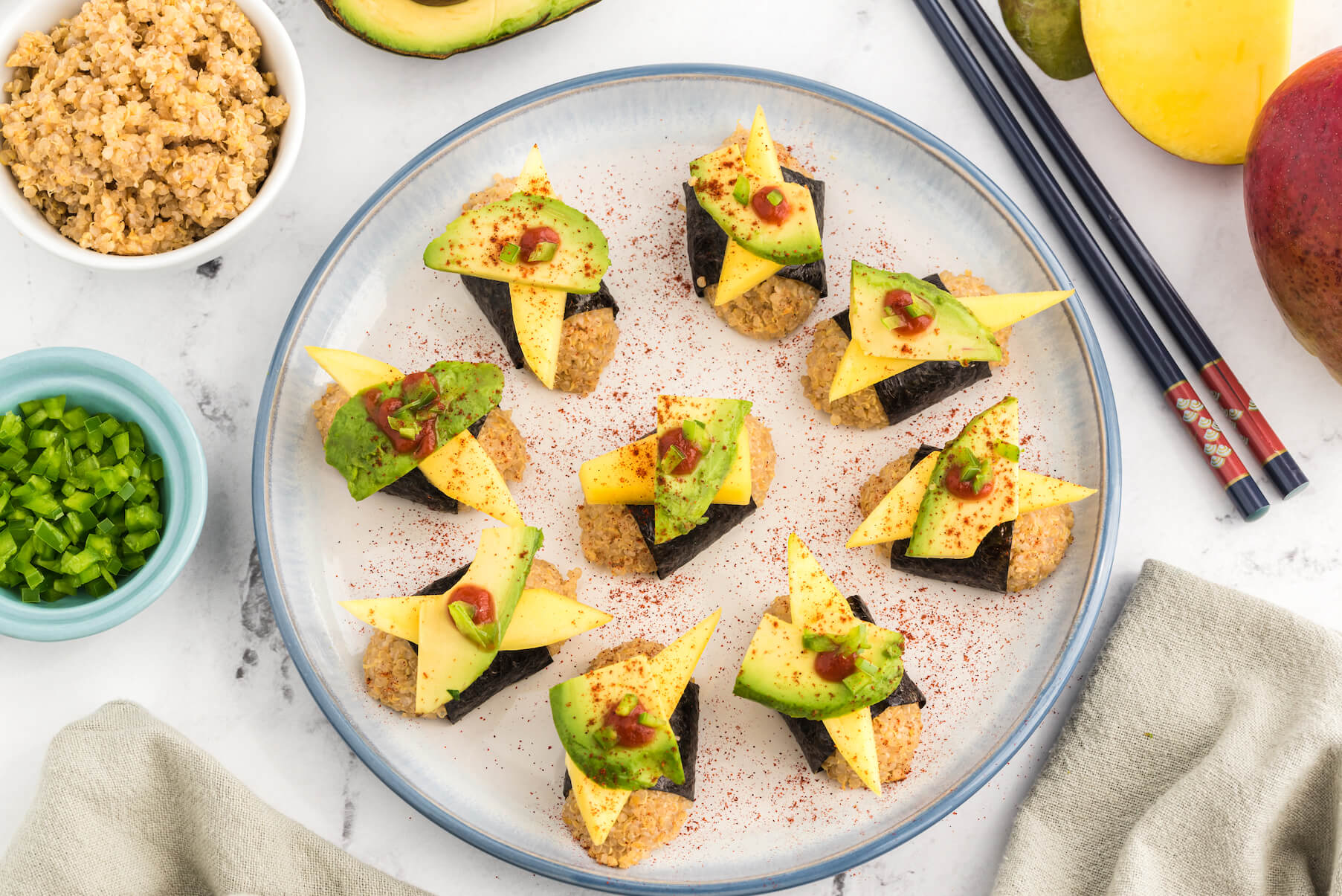
Get ready to have fun in the kitchen while creating edible art that also tastes delicious! Creamy avocado combined with sweet mango on top of seasoned quinoa offers a sweet and savory burst of flavor that will satisfy your taste buds while nourishing your body. Quinoa, avocado, and mango are all packed with nutrients, including vitamin E. Just be sure to take in your artistry before you dive in.
2. Slow-Cooked Collards with Rainbow Veggies
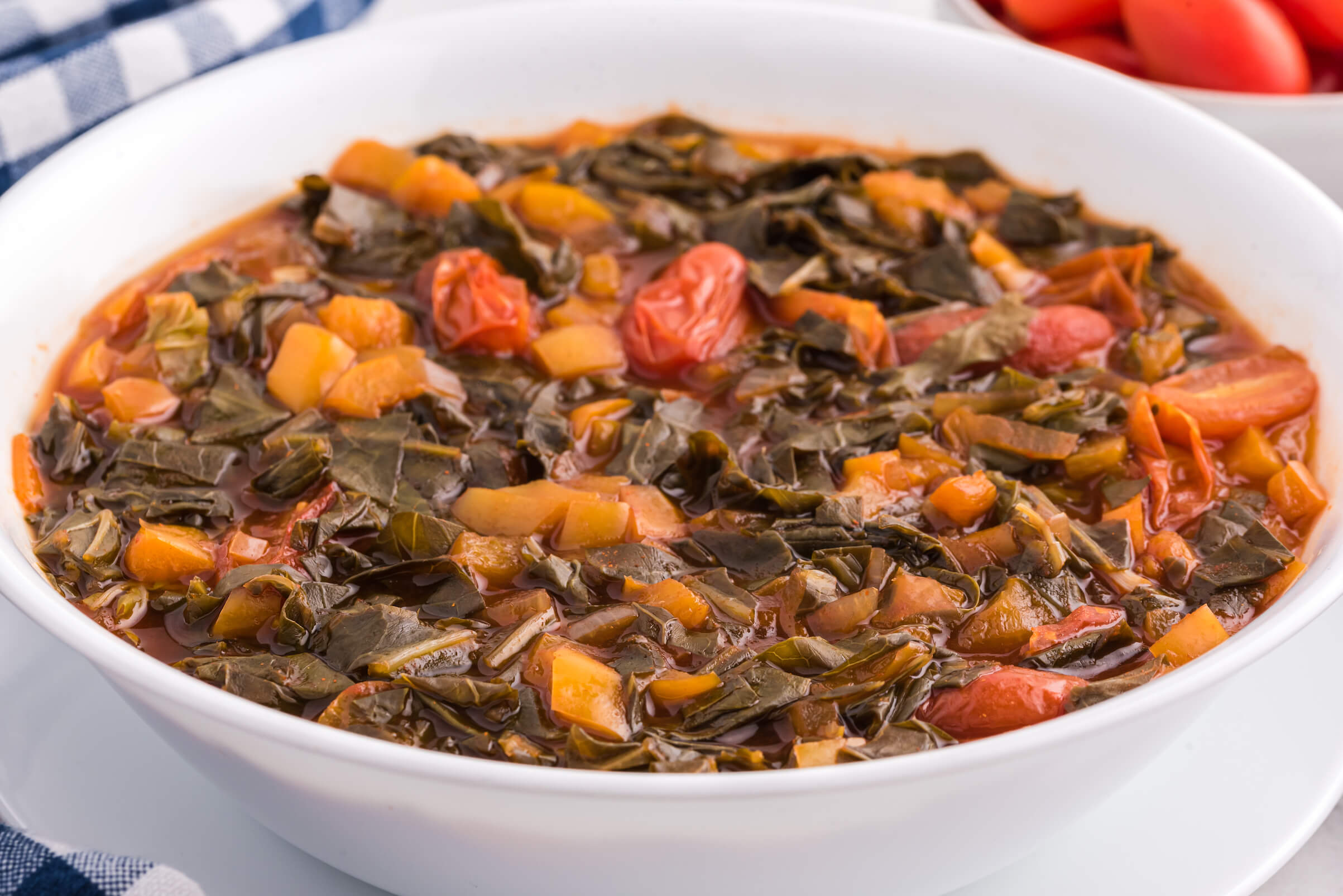
Whether this is your first time trying collards or you’ve been a collards fan all your life, you’ve come to the right place! This smoky, flavorful, and colorful dish will permeate your kitchen with the most delectable aromas, satisfy your taste buds with bountiful flavors, and nourish your body with plentiful nutrients. Collards, peppers, and tomatoes are all good sources of vitamin E, as well as many other nutrients like fiber, vitamin C, and carotenoids. Serve this dish as a side or on top of brown rice with tofu to make it a main meal.
3. Cruciferous Crunch Bowl
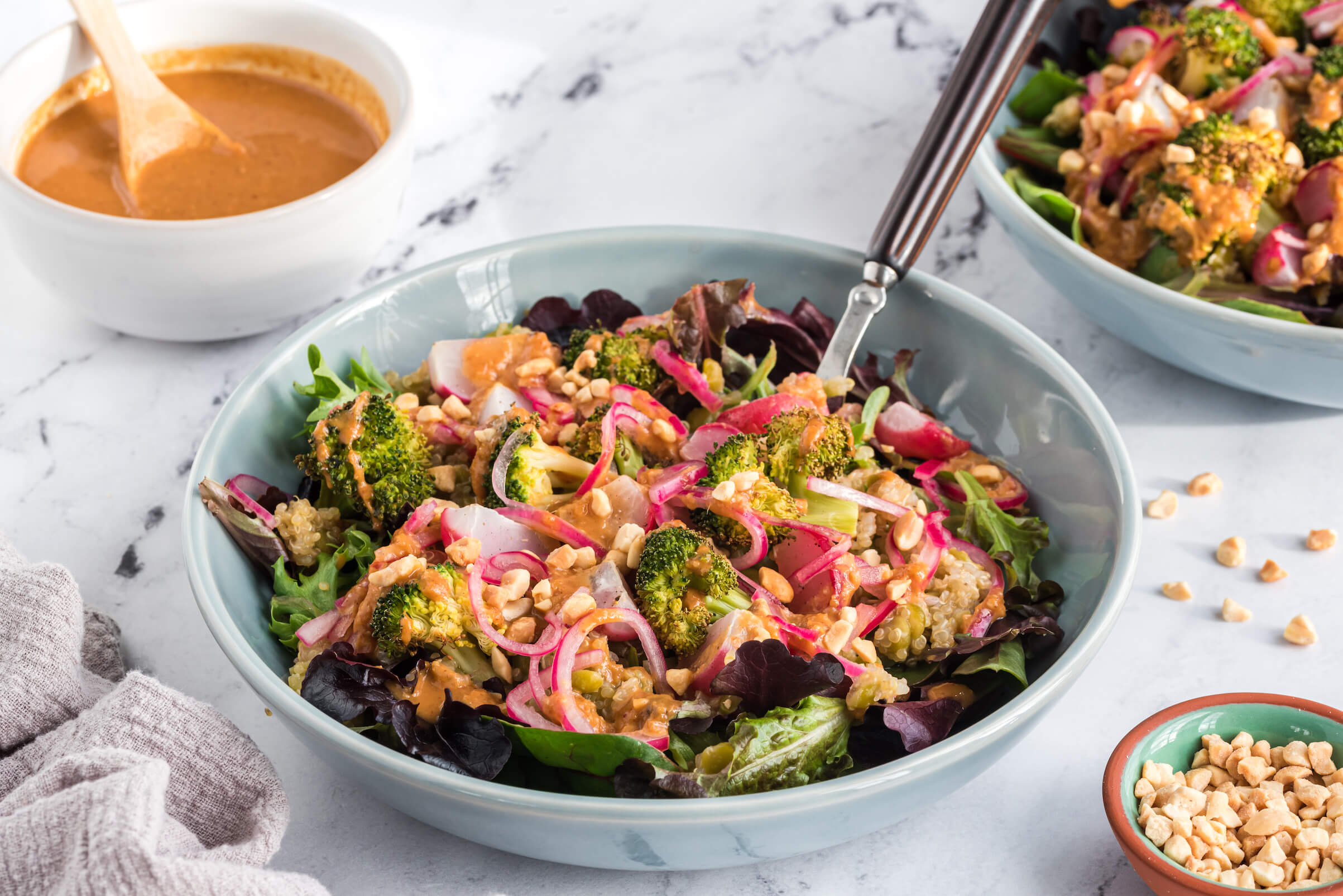
This grain bowl tops the charts for three reasons. First, cruciferous veggies are nutrition powerhouses and have been shown to help reduce the risk of cancer and heart disease, as well as foster a healthy gut with their high fiber content. Second, the grain bowl contains four milligrams of vitamin E per serving. Third, making quinoa and lentils couldn’t be easier! They go in the same pot to cook together and finish together (broccoli and radish do the same — roast together and finish together). It’s like they’re all best friends holding hands as they cross the finish line.
Get Your Vitamin E from Food!
The purpose of Vitamin E is to serve as a fat-soluble antioxidant vitamin that makes an important contribution to your health. Getting enough vitamin E is important for keeping inflammation and oxidative damage at bay, and it may even support heart, brain, and eye health. While vitamin E deficiency is rare, it can be a higher risk among people with certain genetic or fat-malabsorptive conditions. Healthy dietary sources include nuts and seeds, dark leafy greens, and avocados. Due to the risk for overdose and mixed results in studies, taking a vitamin E supplement is not recommended for most healthy people. Eating a variety of whole plant foods, and including healthy fats in your diet to promote absorption, is the best way to make sure you get enough vitamin E.





